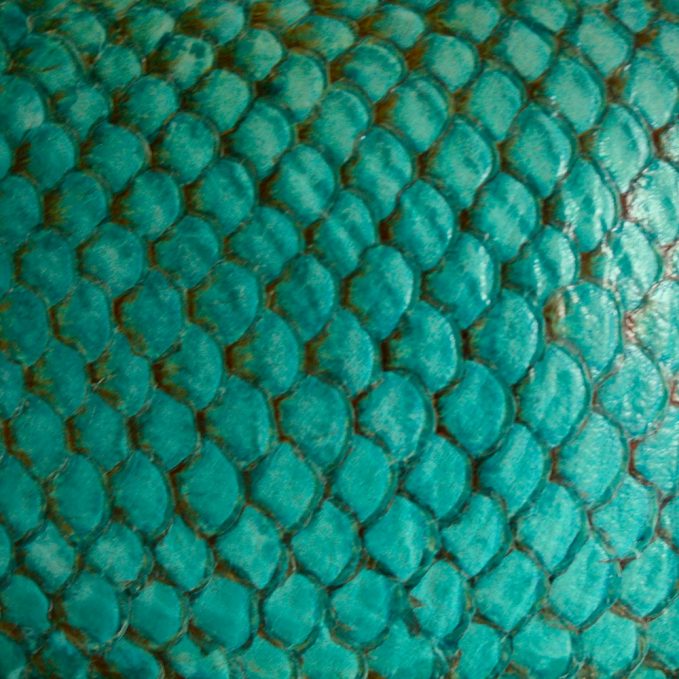There are certain ethical issues with leather but perhaps this is a better solution.
Steinunn Gunnsteinsdóttir is the sales manager of Atlantic Leather (now Nordic Fish Leather I think?), an Icelandic company that owns the only fish tannery in Europe. They’ve been making leather from the skins of salmon and cod (amongst other types) since 1994 and produce nearly a tonne of leather every month.
If that sounds like a lot, consider the fact this is all done by only 19 employees and the whole process takes nearly four weeks. There are advantages to using fish skin rather than the cow or lamb hide, as Gunnsteinsdóttir explains:
Fish leather’s actually nine times stronger than lamb or cow leather of similar thickness. This is because the fibres in fish skin criss-cross rather than (go) just up and down… it makes it much more durable leather for products that have to be really strong like shoes, belts and bags.
Snake and alligator skin are used for leather before but fish is a new one on me and it helps reduce use of the endangered species. But not for fashion houses Jimmy Choo and Dior who Atlantic Leather supply.
They aren’t the only fish leather makers in the world. Kenya is home to Victorian Foods where perch skin is the main material, fished from the largest desert lake in the world. Of course, it’s important that this practice doesn’t contribute to overfishing which has a dangerous effect on the marine wildlife and food for the populations that need it. But right now, it looks like a great alternative.
(image credit: Ella Gordon)
